 A scientific research paper published in ACS Nano has been selected as recipient of a prestigious award from the American Ceramic Society (ACerS). ACS Nano is one of more than 40 peer-reviewed journals published by the American Chemical Society, the world's largest scientific society.
A scientific research paper published in ACS Nano has been selected as recipient of a prestigious award from the American Ceramic Society (ACerS). ACS Nano is one of more than 40 peer-reviewed journals published by the American Chemical Society, the world's largest scientific society.
Michael Naguib, Olha Mashtalir, Joshua Carle, Volker Presser, Jun Lu, Lars Hultman, Yury Gogotsi, and Michel W. Barsoum, “Two-Dimensional Transition Metal Carbides”, ACS Nano, Vol 6, No. 2, 1322-1331, 2012
| Rus | Eng |
ACerS' Ross Coffin Purdy Award will recognize the article, which was the first to describe a facile method to produce a large family of two-dimensional layered, early transition metal carbides and nitrides, labeled MXenes. The latter are so-called because they are produced by selective etching of the A-group element — aluminum in this case — from an even larger family of layered solids labeled the MAX phases. The MAX phases were in turn discovered by Michel Barsoum, Ph.D., and co-workers roughly 15 years ago at Drexel University.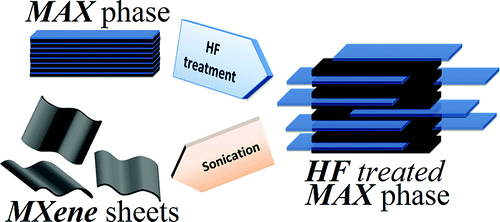
Barsoum, A.W. Grosvenor and Distinguished Professor at Drexel University, and Distinguished University Professor and Trustee Chair Yury Gogotsi, Ph.D., also from Drexel Materials, were co-authors of the award-winning paper, along with students Michael Naguib, Olha Mashtalir and Joshua Carle, together with collaborators from Linkoping University in Sweden.
The annual Ross Coffin Purdy Award recognizes researchers "judged to have made the most valuable contribution to ceramic technical literature." The ACerS board unanimously agreed to grant the honor to the Barsoum and Gogotsi team's work. The award will be presented in October during the Materials Science and Technology Conference in Montréal, Canada.
MXenes have potential uses in a broad range of energy and electronics applications, including lithium-ion batteries and supercapacitors. The materials' layered structure resembles that of graphene — hence the suffix ene — a two-dimensional sheet of carbon, but its chemistry is more complex and more versatile.
"The research reported in this paper is an exciting advance in this new family of materials for which the applications are just beginning to be envisioned," said Dawn Bonnell, Ph.D., Trustee Chair Professor in the Materials Science Department of the University of Pennsylvania and director of the Nano/Bio Interface Center. Bonnell nominated Barsoum's group for the honor.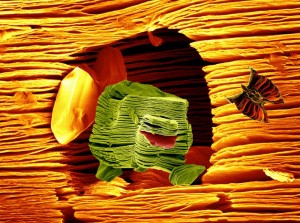
In their ACS Nano paper "Two-Dimensional Transition Metal Carbides," the authors acknowledge funding from the Assistant Secretary for Energy Efficiency and Renewable Energy Office of Vehicle Technologies of the U.S. Department of Energy, the Commonwealth of Pennsylvania's Ben Franklin Technology Development Authority and the Alexander von Humboldt Foundation.
Ross Coffin Purdy, in whose honor this award is given, served The American Ceramic Society for 24 years as General Secretary and Editor of its publications. He was the recipient of many awards, a Fellow and Honorary Life Member, and President of the Society.
The American Chemical Society is a nonprofit organization chartered by the U.S. Congress. With more than 163,000 members, ACS is the world’s largest scientific society and a global leader in providing access to chemistry-related research through its multiple databases, peer-reviewed journals and scientific conferences.
Michael Naguib, Olha Mashtalir, Joshua Carle, Volker Presser, Jun Lu, Lars Hultman, Yury Gogotsi, and Michel W. Barsoum, “Two-Dimensional Transition Metal Carbides”, ACS Nano, Vol 6, No. 2, 1322-1331, 2012
Abstract
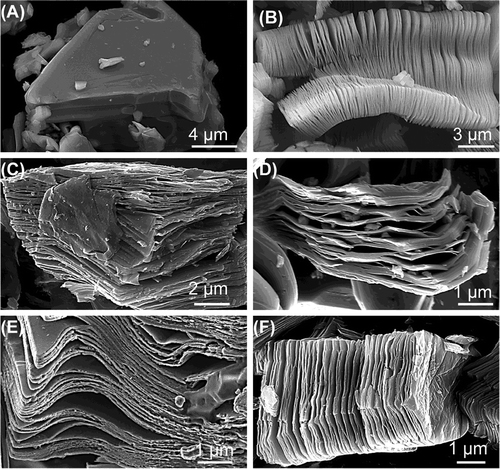 Herein we report on the synthesis of two-dimensional transition metal carbides and carbonitrides by immersing select MAX phase powders in hydrofluoric acid, HF. The MAX phases represent a large (>60 members) family of ternary, layered, machinable transition metal carbides, nitrides, and carbonitrides. Herein we present evidence for the exfoliation of the following MAX phases: Ti2AlC, Ta4AlC3, (Ti0.5,Nb0.5)2AlC, (V0.5,Cr0.5)3AlC2, and Ti3AlCN by the simple immersion of their powders, at room temperature, in HF of varying concentrations for times varying between 10 and 72 h followed by sonication. The removal of the “A” group layer from the MAX phases results in 2-D layers that we are labeling MXenes to denote the loss of the A element and emphasize their structural similarities with graphene. The sheet resistances of the MXenes were found to be comparable to multilayer graphene. Contact angle measurements with water on pressed MXene surfaces showed hydrophilic behavior.
Herein we report on the synthesis of two-dimensional transition metal carbides and carbonitrides by immersing select MAX phase powders in hydrofluoric acid, HF. The MAX phases represent a large (>60 members) family of ternary, layered, machinable transition metal carbides, nitrides, and carbonitrides. Herein we present evidence for the exfoliation of the following MAX phases: Ti2AlC, Ta4AlC3, (Ti0.5,Nb0.5)2AlC, (V0.5,Cr0.5)3AlC2, and Ti3AlCN by the simple immersion of their powders, at room temperature, in HF of varying concentrations for times varying between 10 and 72 h followed by sonication. The removal of the “A” group layer from the MAX phases results in 2-D layers that we are labeling MXenes to denote the loss of the A element and emphasize their structural similarities with graphene. The sheet resistances of the MXenes were found to be comparable to multilayer graphene. Contact angle measurements with water on pressed MXene surfaces showed hydrophilic behavior.
Keywords: MXene; two-dimensional materials; carbides; carbonitrides; exfoliation



 Last Call! Have you submitted your abstract for IEEE NAP-2025 yet? Join us at the International Symposium on "The MXene Frontier: Transformative Nanomaterials Shaping the Future" – the largest MXene-focused conference in Europe this year! Final Submission Deadline: May 15, 2025. Don’t miss this exclusive opportunity to showcase your research and engage with world leaders in the MXene field!
Last Call! Have you submitted your abstract for IEEE NAP-2025 yet? Join us at the International Symposium on "The MXene Frontier: Transformative Nanomaterials Shaping the Future" – the largest MXene-focused conference in Europe this year! Final Submission Deadline: May 15, 2025. Don’t miss this exclusive opportunity to showcase your research and engage with world leaders in the MXene field!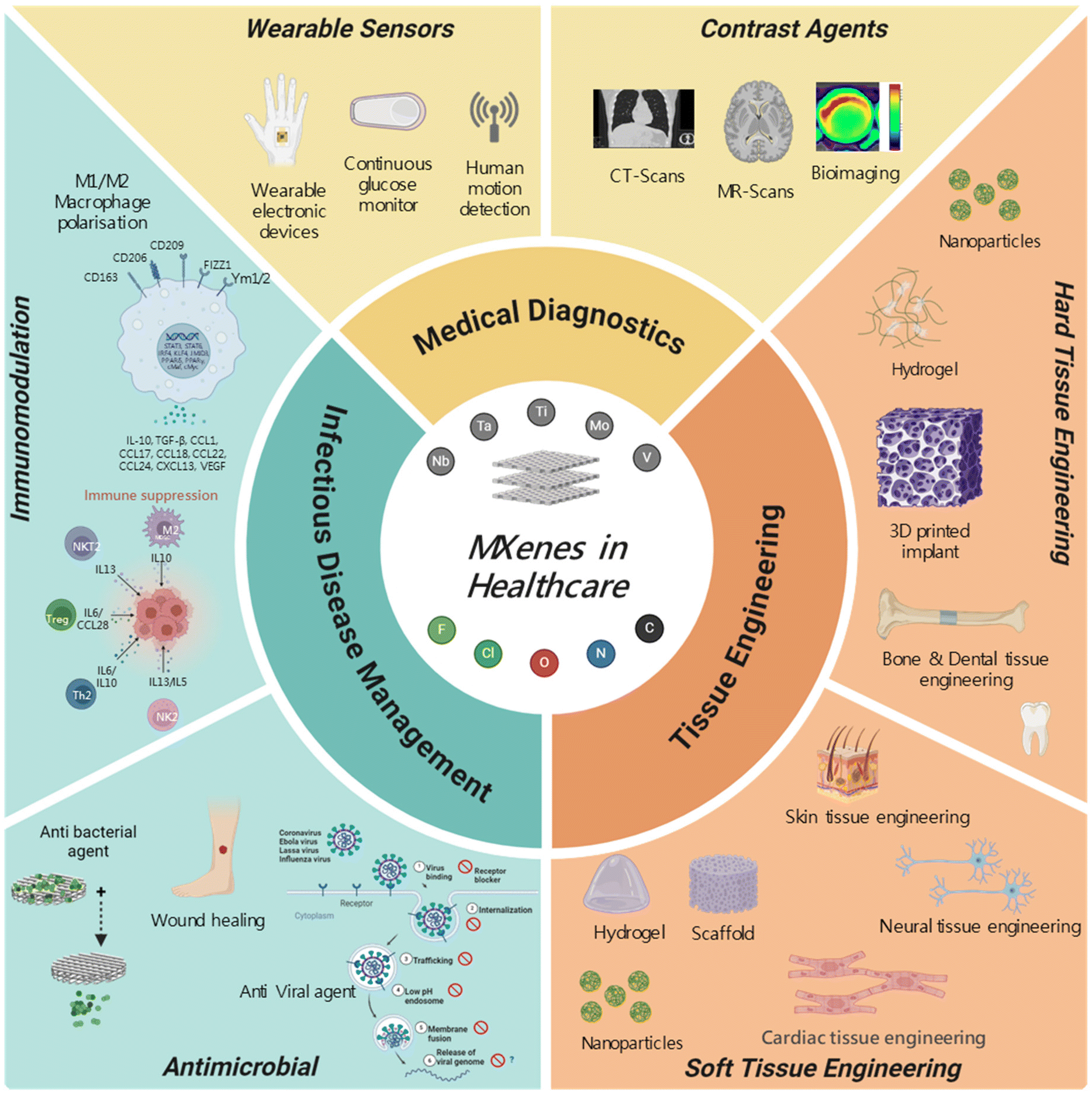 We are excited to announce the publication of latest review article on MXenes in Healthcare. This comprehensive review explores the groundbreaking role of MXenes—an emerging class of 2D materials—in revolutionizing the fields of medical diagnostics and therapeutics. Read the full article here: https://doi.org/10.1039/D4NR04853A.
We are excited to announce the publication of latest review article on MXenes in Healthcare. This comprehensive review explores the groundbreaking role of MXenes—an emerging class of 2D materials—in revolutionizing the fields of medical diagnostics and therapeutics. Read the full article here: https://doi.org/10.1039/D4NR04853A.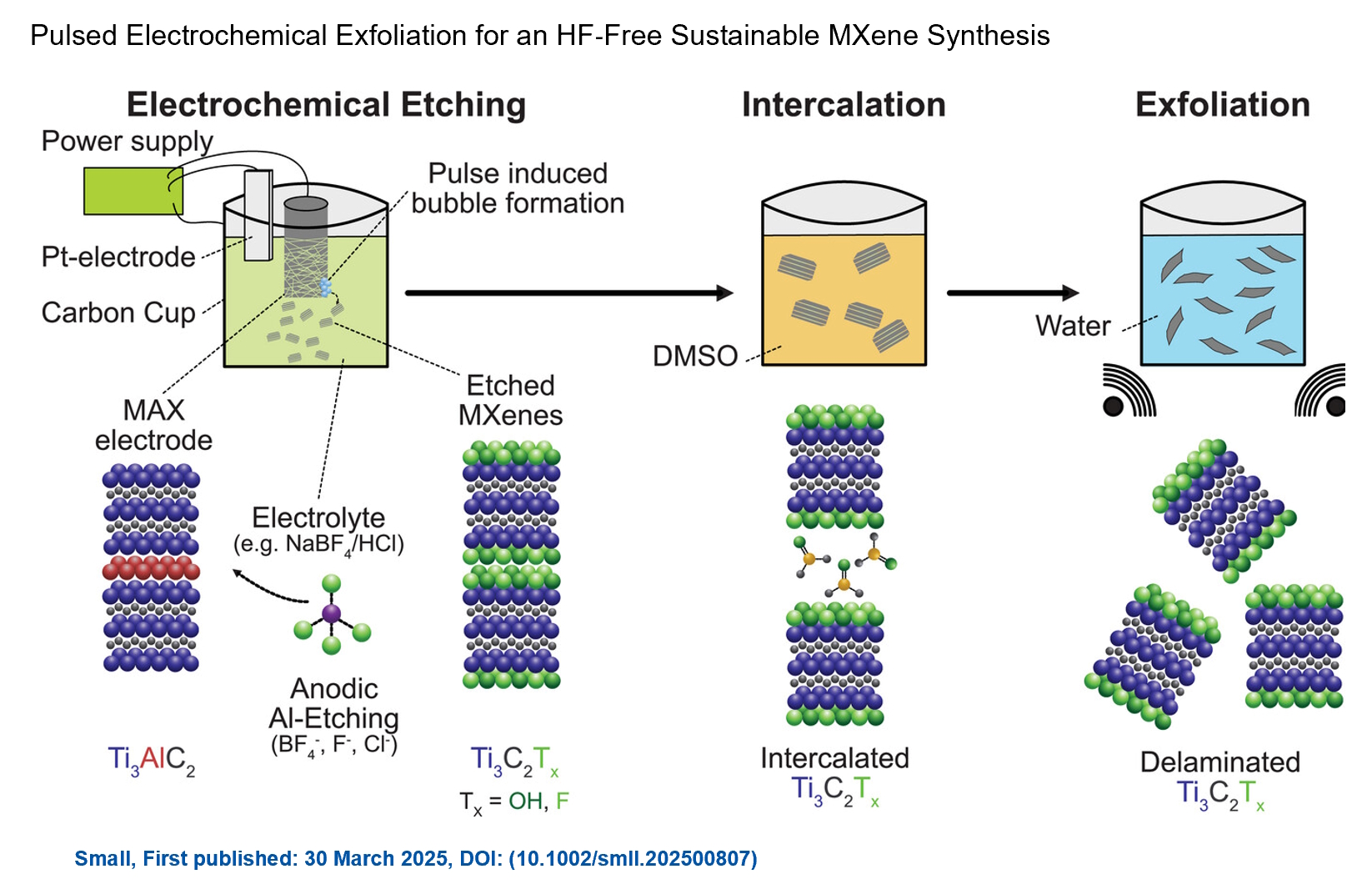 Congratulations and thank you to our collaborators from TU Wien and CEST for very interesting work and making it published! In this work, an upscalable electrochemical MXene synthesis is presented. Yields of up to 60% electrochemical MXene (EC-MXene) with no byproducts from a single exfoliation cycle are achieved.
Congratulations and thank you to our collaborators from TU Wien and CEST for very interesting work and making it published! In this work, an upscalable electrochemical MXene synthesis is presented. Yields of up to 60% electrochemical MXene (EC-MXene) with no byproducts from a single exfoliation cycle are achieved. Congratulations to all collaborators with this interesting joint work!
Congratulations to all collaborators with this interesting joint work! Thank you to our collaborators for the amazing joint work recently published in Graphene and 2D Nanomaterials about MXene–silk fibroin composite films aiming to develop materials with tunable electronic and thermal properties
Thank you to our collaborators for the amazing joint work recently published in Graphene and 2D Nanomaterials about MXene–silk fibroin composite films aiming to develop materials with tunable electronic and thermal properties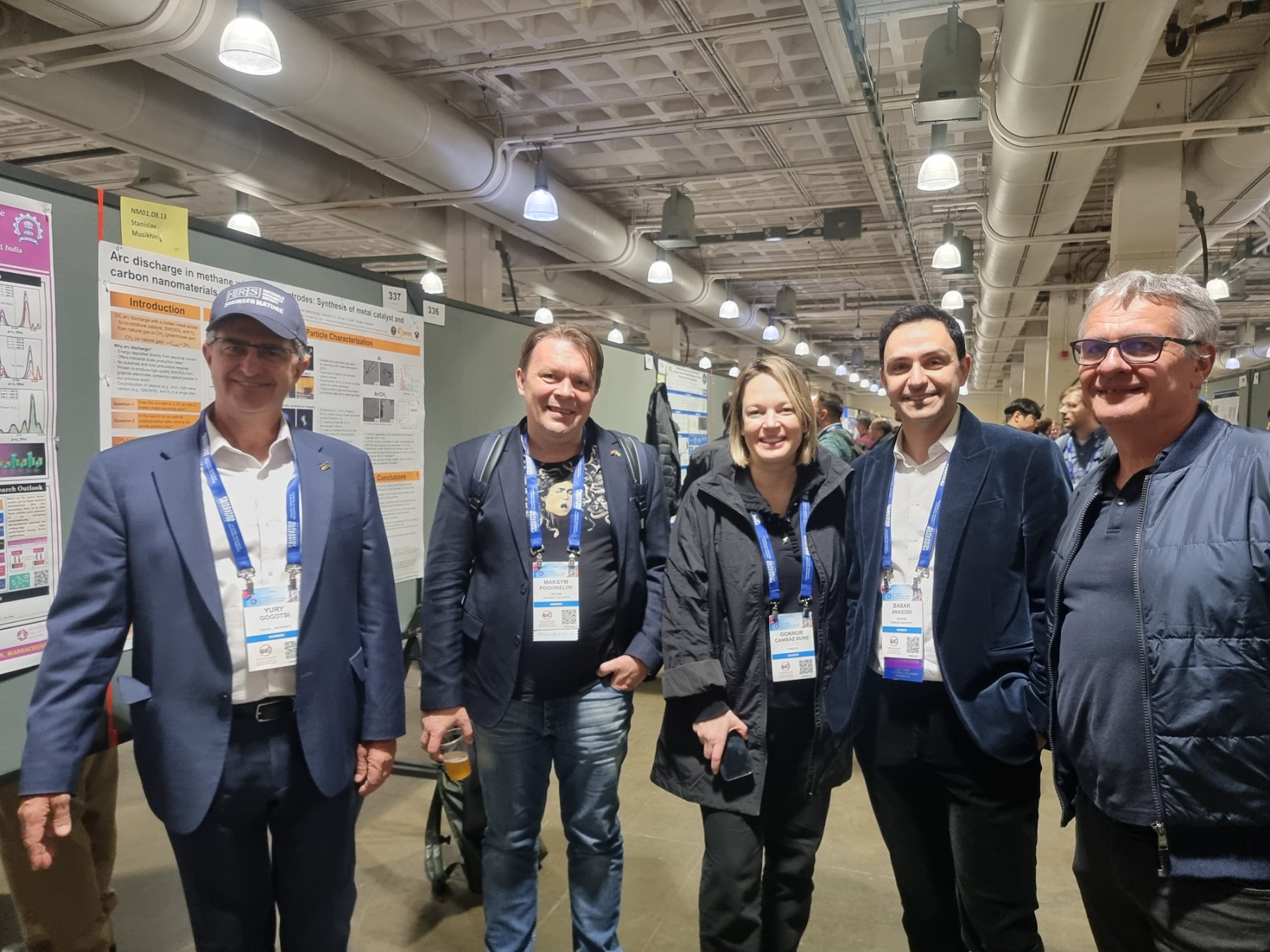 Dr. Oleksiy Gogotsi, director of MRC and Carbon-Ukraine, innovative companies that are among the leaders on the world MXene market, visited 2024 MRS Fall Meeting & Exhibit. together with Dr. Maksym Pogorielov, Head of Advanced Biomaterials and Biophysics Laboratory, University of Latvia.
Dr. Oleksiy Gogotsi, director of MRC and Carbon-Ukraine, innovative companies that are among the leaders on the world MXene market, visited 2024 MRS Fall Meeting & Exhibit. together with Dr. Maksym Pogorielov, Head of Advanced Biomaterials and Biophysics Laboratory, University of Latvia.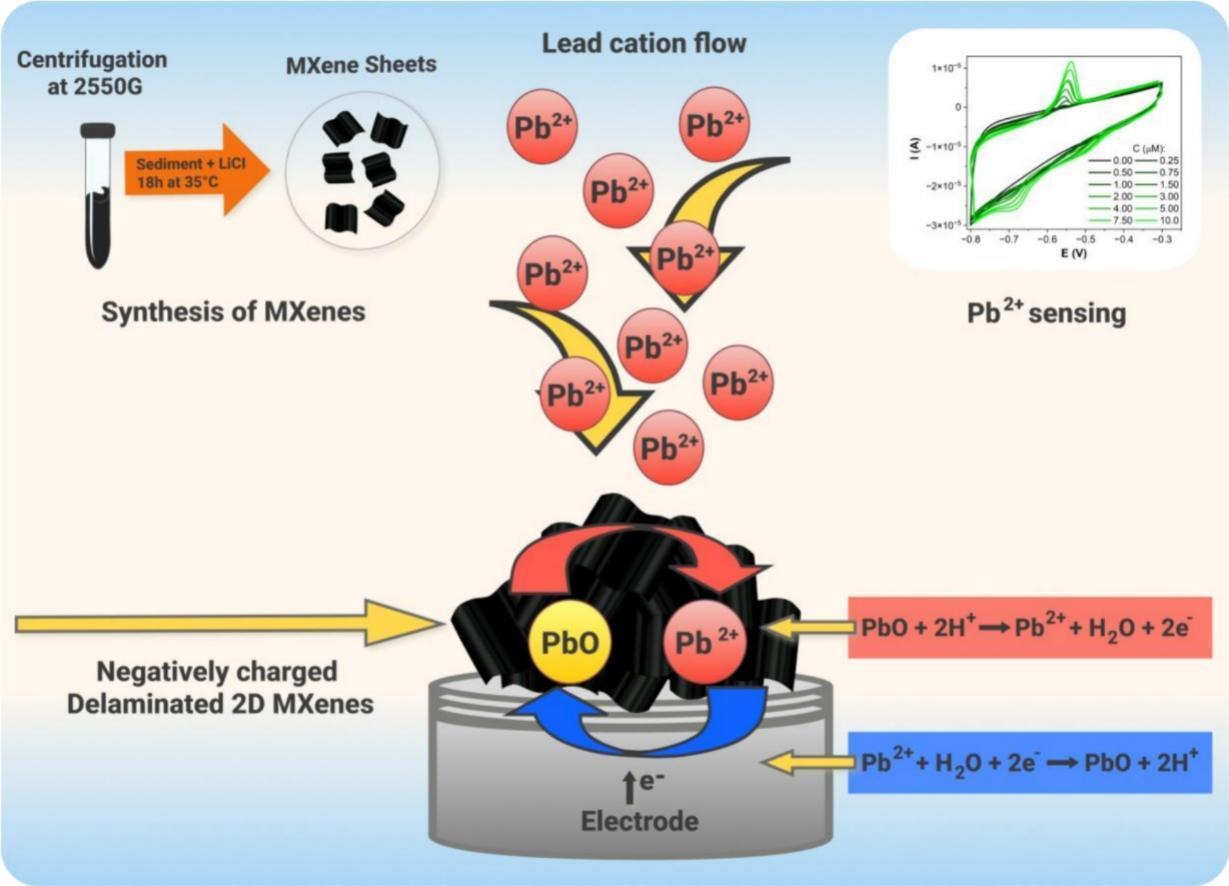
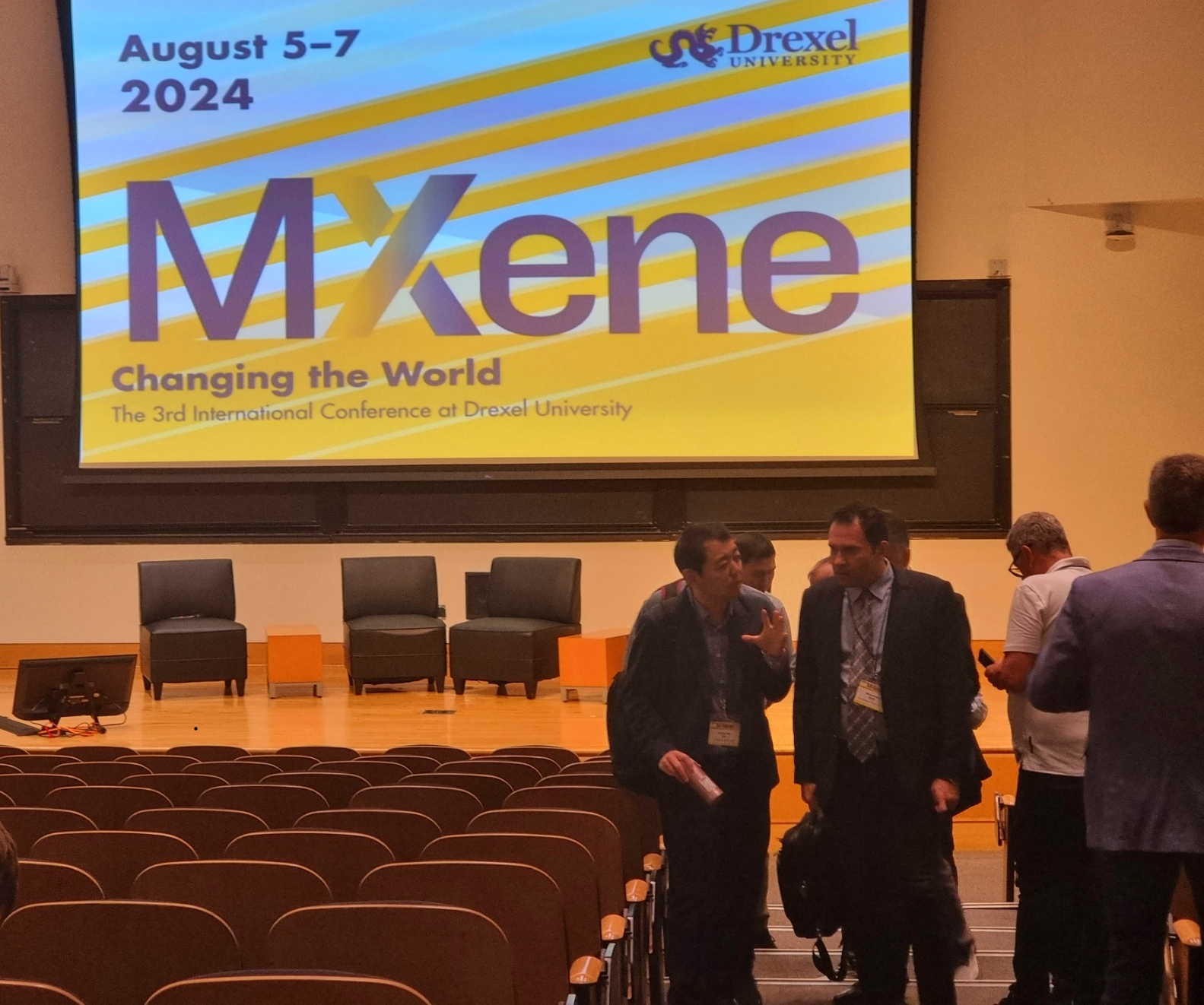 MRC and Carbon-Ukraine team visited the 3rd International MXene conference held at Drexel University on August 5-8, 2024. Conference brought together the best reserchers and leading experts on MXene field.
MRC and Carbon-Ukraine team visited the 3rd International MXene conference held at Drexel University on August 5-8, 2024. Conference brought together the best reserchers and leading experts on MXene field. 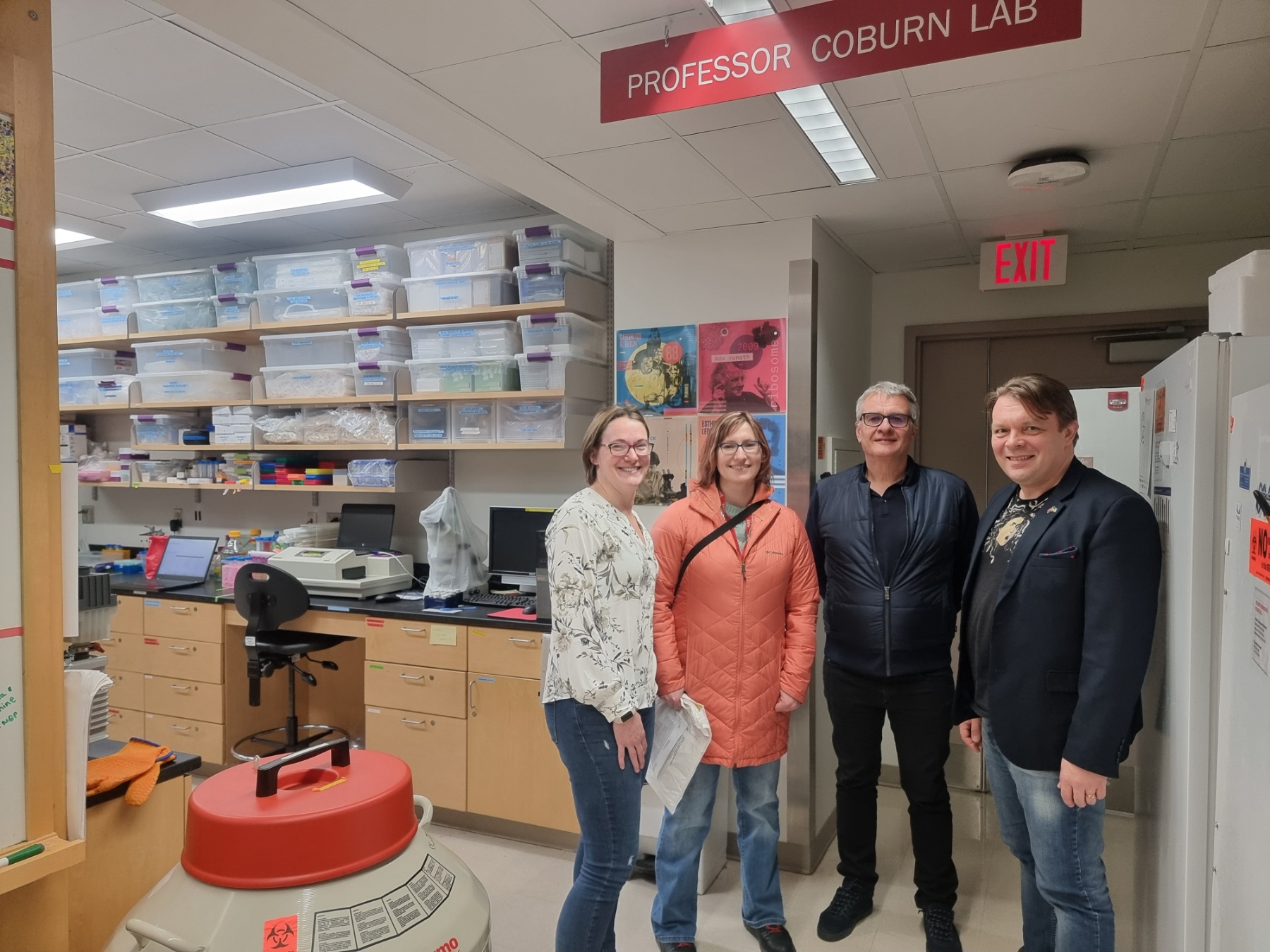
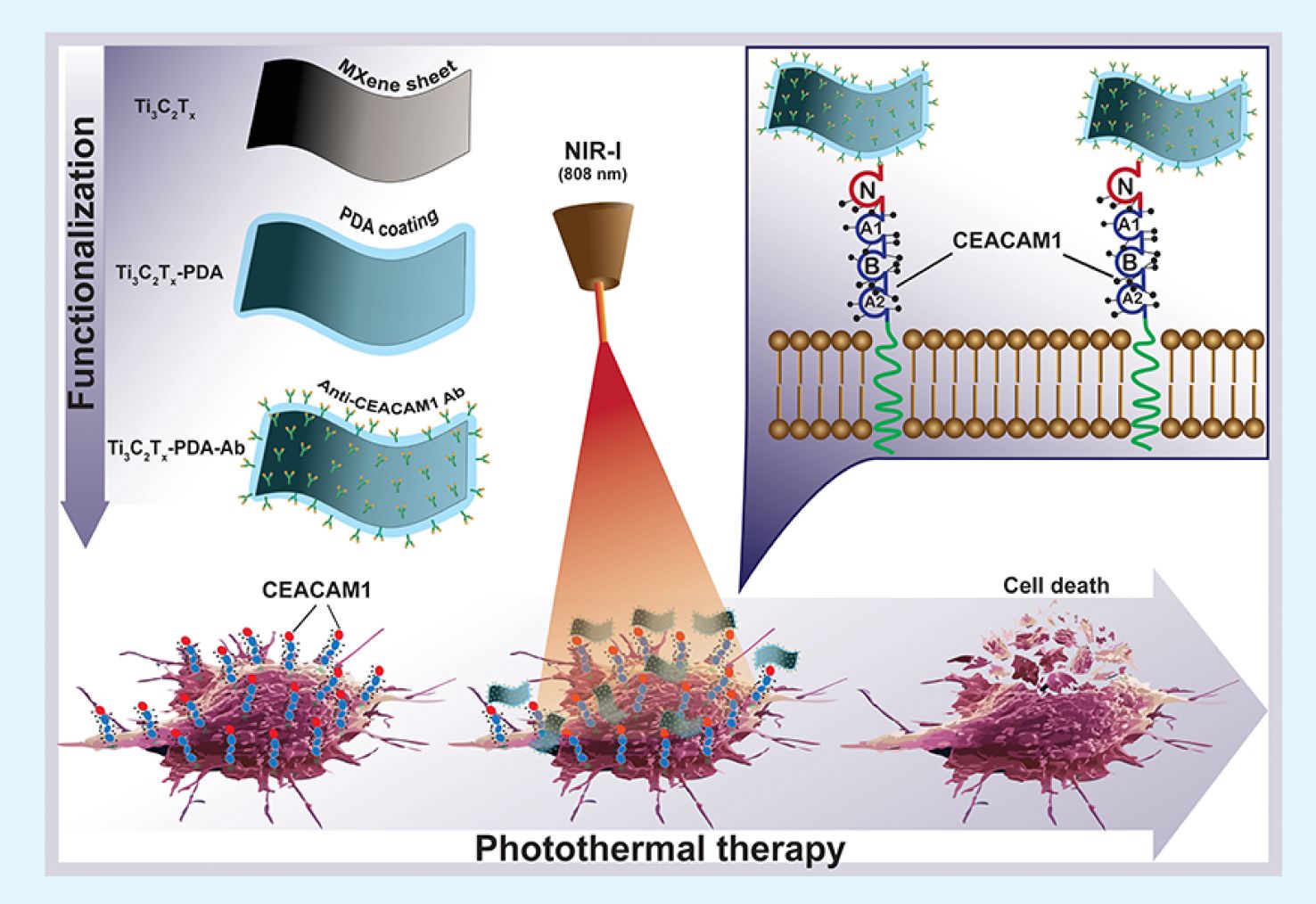 Together with colleagues from the University of Latvia, MRC/Carbone Ukraine, Adam Mickiewicz University, University Clinic Essen, and others, we have developed a novel concept involving the binding of antibodies to MXenes. In our research, we utilized anti-CEACAM1 antibodies to develop targeted photo-thermal therapy for melanoma (in vitro), paving the way for future in vivo studies and clinical trials. For the first time, we demonstrate the feasibility of delivering MXenes specifically targeted to melanoma cells, enabling the effective ablation of cancer cells under near-infrared (NIR) light. This new technique opens up vast potential for the application of MXenes in cancer treatment, diagnostics, drug delivery, and many other medical purposes.
Together with colleagues from the University of Latvia, MRC/Carbone Ukraine, Adam Mickiewicz University, University Clinic Essen, and others, we have developed a novel concept involving the binding of antibodies to MXenes. In our research, we utilized anti-CEACAM1 antibodies to develop targeted photo-thermal therapy for melanoma (in vitro), paving the way for future in vivo studies and clinical trials. For the first time, we demonstrate the feasibility of delivering MXenes specifically targeted to melanoma cells, enabling the effective ablation of cancer cells under near-infrared (NIR) light. This new technique opens up vast potential for the application of MXenes in cancer treatment, diagnostics, drug delivery, and many other medical purposes.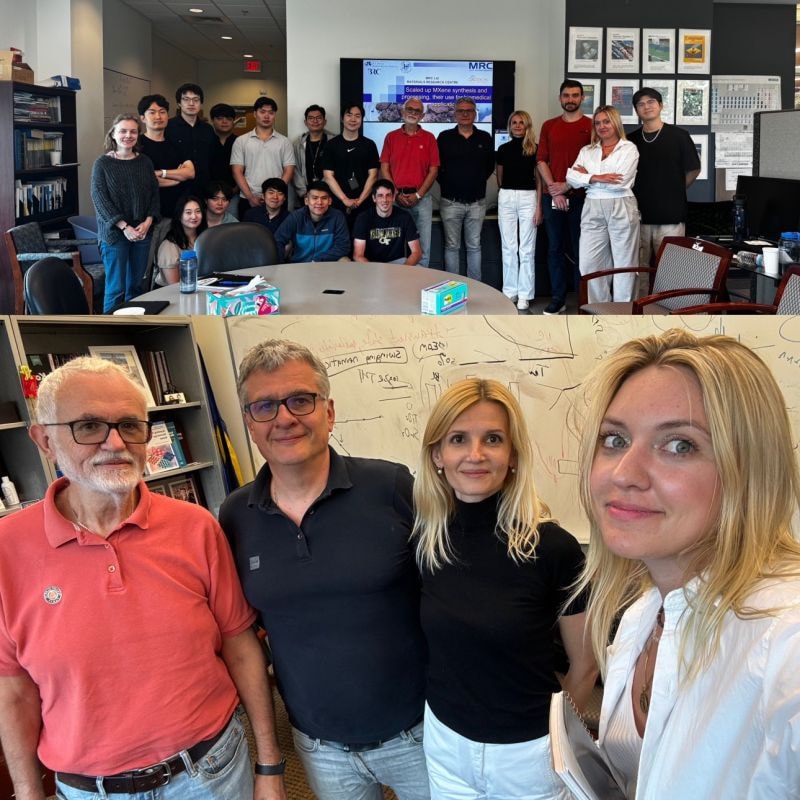

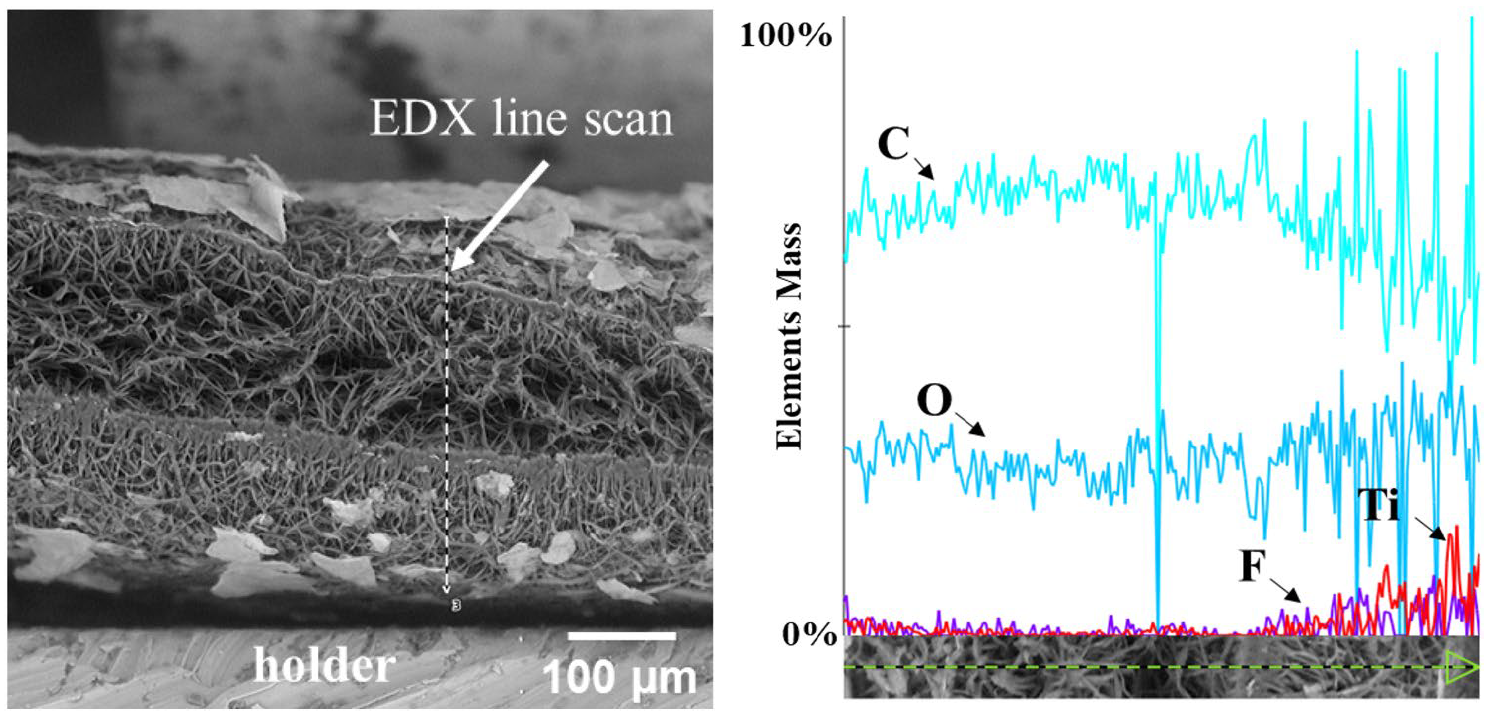 Here we demonstrate a new developed method for depositing Ti3C2Tx MXenes onto hydrophobic electrospun PCL membranes using oxygen plasma treatment. These novel patches hold tremendous potential for providing mechanical support to damaged heart tissue and enabling electrical signal transmission,thereby mimicking the crucial electroconductivity required for normal cardiac function. After a detailed investigation of scaffold-to-cell interplay, including electrical stimulation, novel technology has the potential for clinical application not only for cardiac regeneration, but also as neural and muscular tissue substitutes.
Here we demonstrate a new developed method for depositing Ti3C2Tx MXenes onto hydrophobic electrospun PCL membranes using oxygen plasma treatment. These novel patches hold tremendous potential for providing mechanical support to damaged heart tissue and enabling electrical signal transmission,thereby mimicking the crucial electroconductivity required for normal cardiac function. After a detailed investigation of scaffold-to-cell interplay, including electrical stimulation, novel technology has the potential for clinical application not only for cardiac regeneration, but also as neural and muscular tissue substitutes.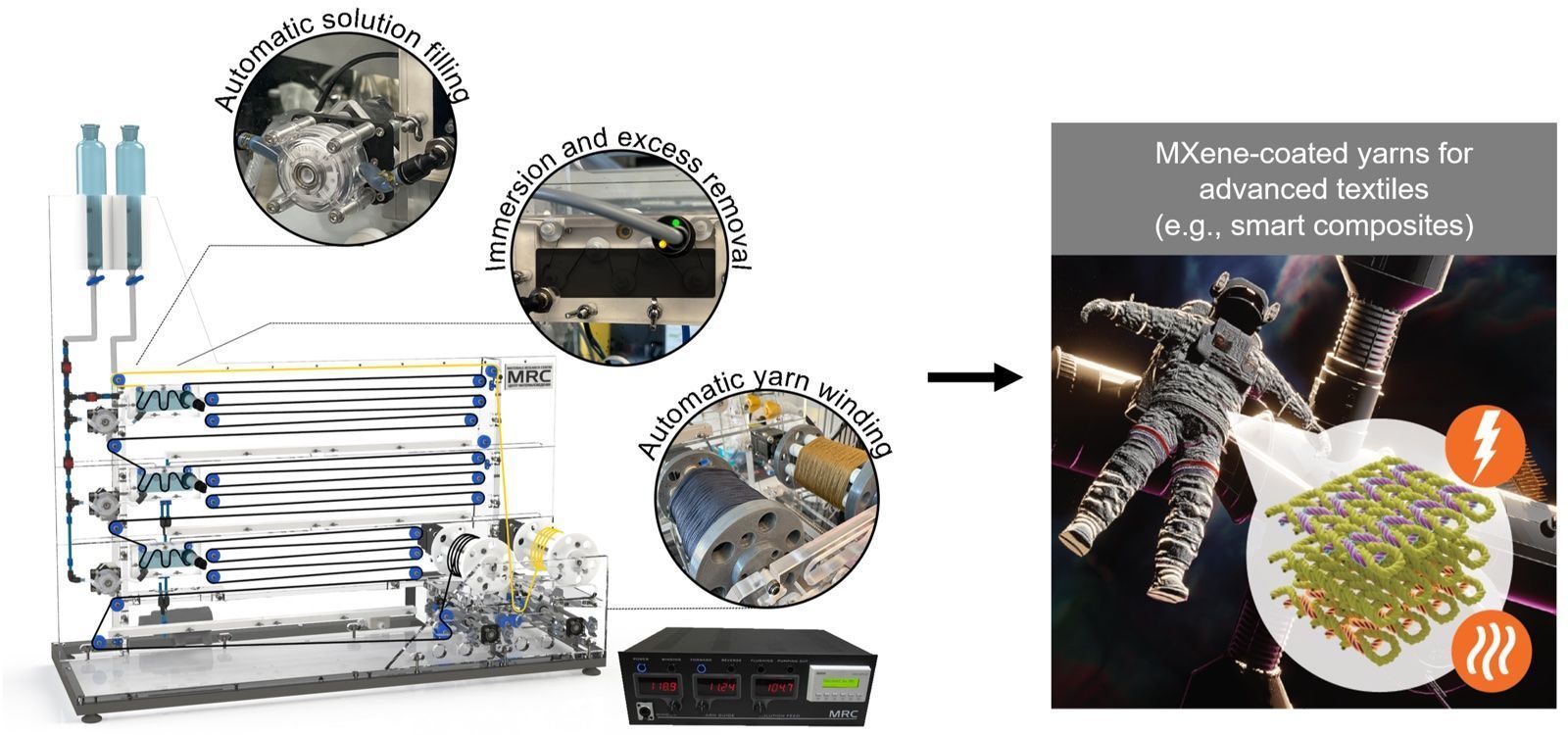
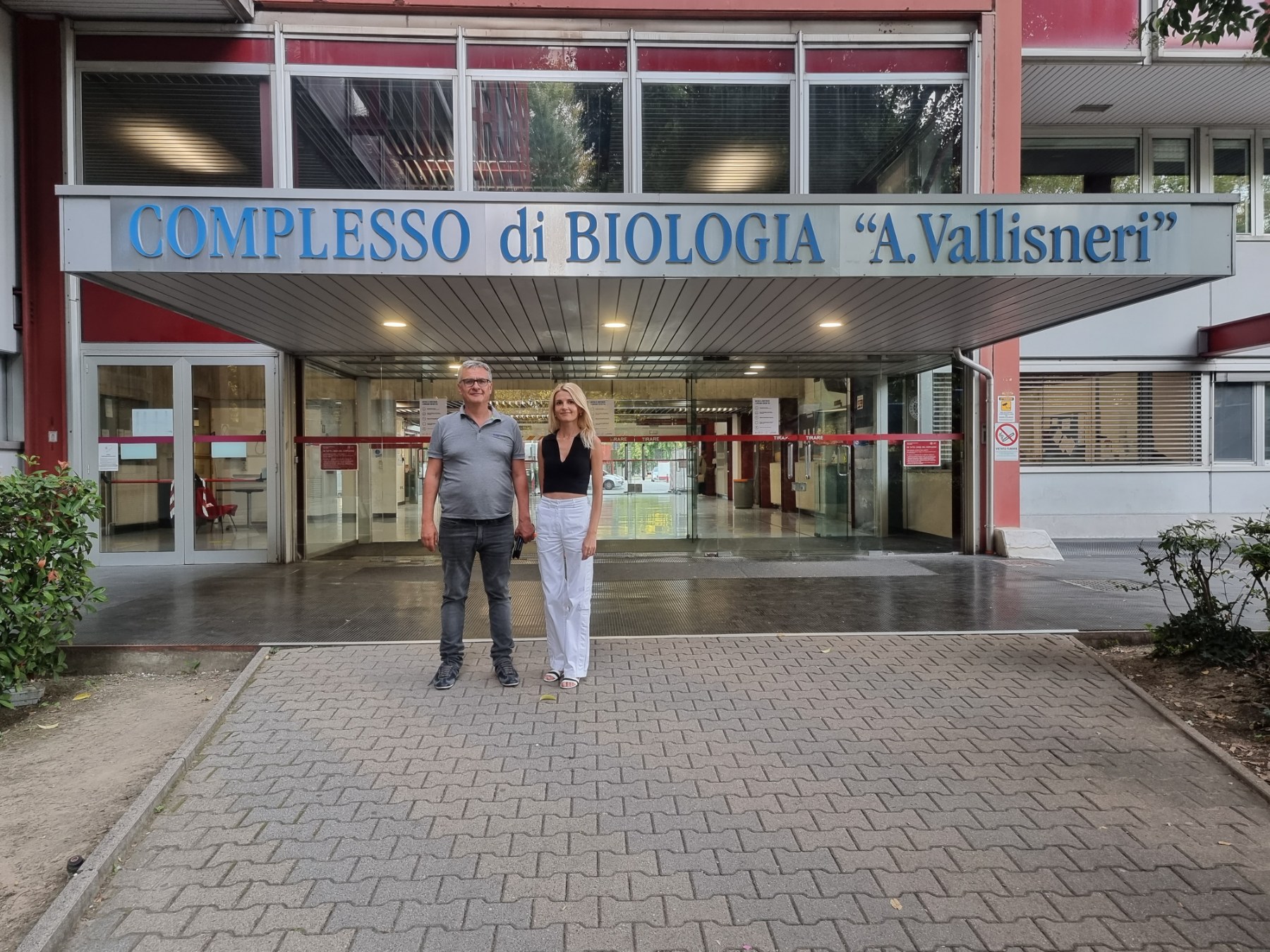 MX-MAP project participants from MRC Dr. Oleksiy Gogotsi and Veronika Zahorodna performed split secondment visit to project partner organization University of Padova (Italy). MX-MAP project works on development of the key strategies for MXene medical applications.
MX-MAP project participants from MRC Dr. Oleksiy Gogotsi and Veronika Zahorodna performed split secondment visit to project partner organization University of Padova (Italy). MX-MAP project works on development of the key strategies for MXene medical applications.